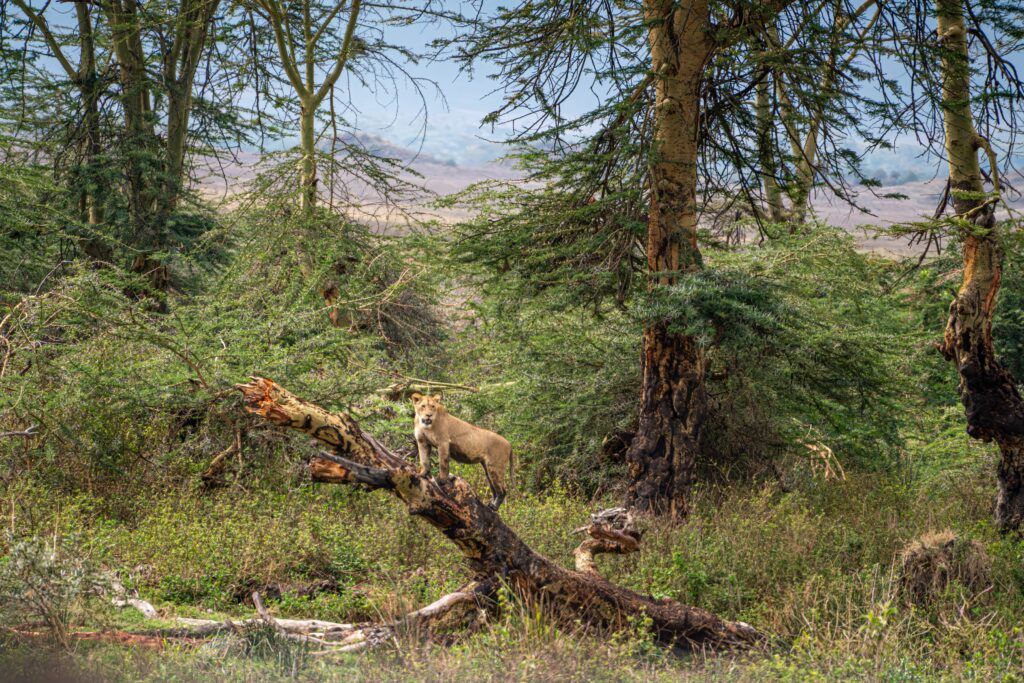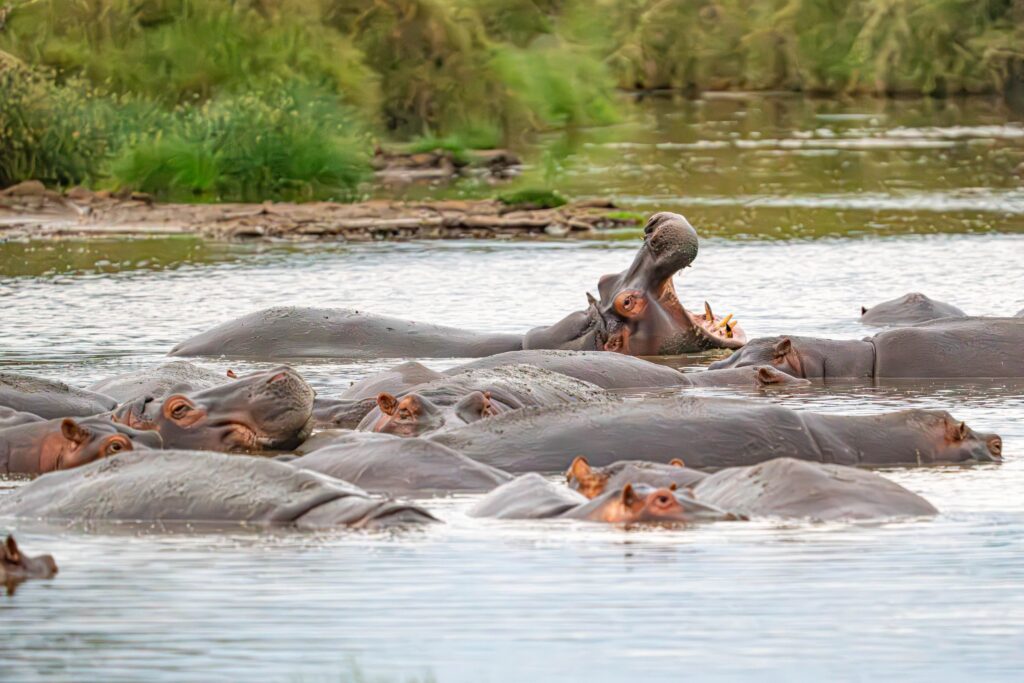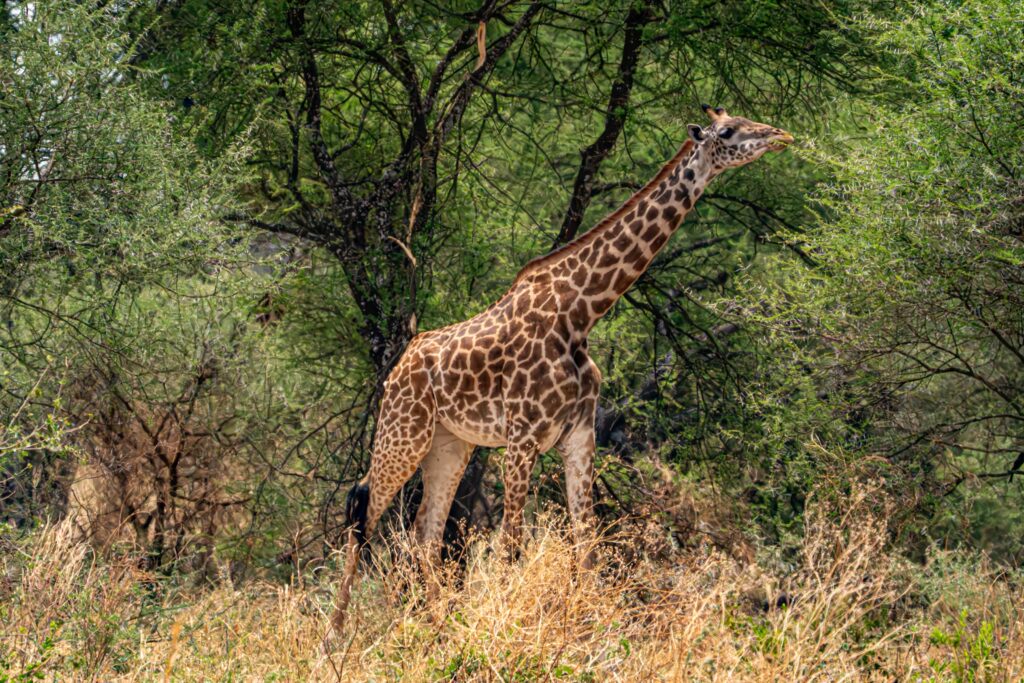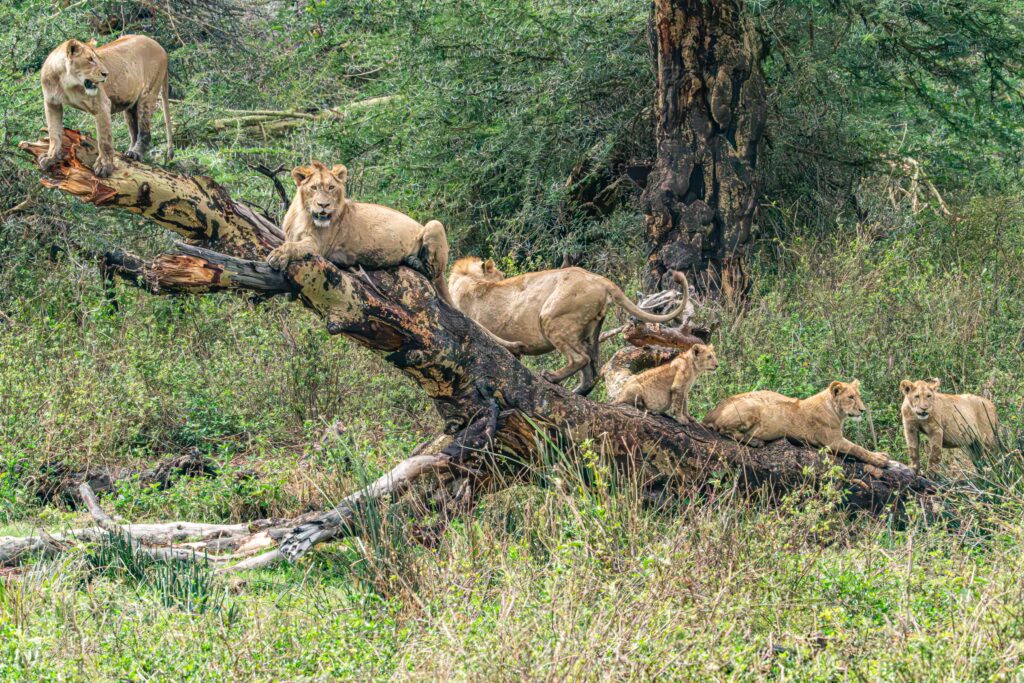Tanzania Countryside – A Concierge Guide
The Tanzania countryside is everything you’d expect in Africa. In the far north, the snowy peaks of Kilimanjaro rise to 19,341 feet, making it the tallest mountain on the continent. In the south, there’s big game hunting in the Selous Game Reserve, one of the largest protected areas in Africa. To the west, you’ll find the plains of the Serengeti, which support the world’s largest overland migration of over two million wildebeest and zebras. To the east are the sandy beaches of Zanzibar, famous for their luxurious resorts and world-class kiteboarding.
We learned about this land of fantasy and diversity in person from expert guides. We are blending their knowledge with our experience and diligent research to create our concierge guide to Tanzania.


Tanzania Map
Like African explorers of old, our guide starts with a Tanzania map. We’re including all the points of interest that appear in this piece with native Google pins. That means you can click around and explore with crowdsourced reviews and photos.
Cities in Tanzania
With a population of more than 5M, Dar es Salaam, a port city on the Indian Ocean, is by far Tanzania’s largest city. It was the capital of Tanzania until 1974 when a referendum moved that designation to the more centrally located Dodoma.
Mwanza City, a port city on Lake Victoria, is the nation’s second-largest city. It’s only 100 miles by car from the westernmost gate (Ndabaka Gate) of Serengeti National Park. Day tours to Serengeti are an option, but the lack of an international passenger airport limits Mwanza as a tourist destination.
Tanzania has three international airports:
- Julius Nyerere International Airport (Dar es Salaam, 2,390,000 passengers annually)
- Abeid Amani Karume International Airport (Zanzibar, 1,230,000 passengers annually)
- Kilimanjaro International Airport (Arusha, 825,000 passengers annually)
We’ve flown into all these airports and will cover each city in more detail.

Zanzibar
Zanzibar is an insular semi-autonomous region within Tanzania consisting of two primary islands, Unguja and Pemba. Unguja, the main island informally known as Zanzibar, has an international airport and a deep water port. Passenger ferries also run between both islands and Dar es Salaam.
The old city of Stone Town mainly consists of a maze of narrow alleys that are too small for cars. It has a history and architecture that’s a mixture of Arab, Persian, Indian, and European elements, which is why it’s a UNESCO World Heritage Site.
It was a center of trade for spices and East African slaves. Said bin Sultan, Sultan of Muscat and Oman, moved his capital from Oman to Stone Town to capitalize on the lucrative trade routes. Zanzibar’s transition to a British protectorate ended slavery and led to the shortest war in history. The Anglo-Zanzibar War lasted 38 minutes until the Royal Navy destroyed the Beit al Hukum Palace.
Tourism produces 25% of the island’s income, with many visitors touring Stone Town before dispersing to one of the island’s many resorts on pristine white sand beaches. Our friend, Janiel, has spent time in Zanzibar (thank you for the images below) and she wrote a detailed article outlining many of the adventurous and fun things to do in Nungwi Zanzibar. We leaned on her for the scoop on Zanzibar.


Arusha
Arusha is located in the rain shadow of Mount Meru (14,968 ft), creating a remarkably lush and green landscape. It is close to the Serengeti National Park, the Ngorongoro Conservation Area, Lake Manyara National Park, Olduvai Gorge, Tarangire National Park, Mount Kilimanjaro, and the Arusha National Park. The Arusha airport offers domestic flights, which allow visitors to take regional flights into airstrips within the nearby parks. It’s also an hour away from the Kilimanjaro International Airport, known as the “Gateway to Africa’s Wildlife.”
In addition to supporting the Northern Tanzania tourism circuit and Kilimanjaro climbing expeditions, Arusha is an important international diplomatic hub. It hosts the African Court of the African Union and is the capital of the East African Community. The Arusha Clock Tower is said to mark the midpoint between Cairo and Cape Town, which speaks to why Arusha’s prominence as a centrally located African city.
A steady stream of tourists and diplomats creates a strong service industry with upscale hotels, gourmet restaurants, and vibrant local markets.


Dar es Salaam
Dar is a bustling economic hub with many business travelers, but it doesn’t have a tourist base like Zanzibar or Arusha. There are good hotels, including a new four-star hotel coming to the Dar es Salaam airport, but your options are limited once you’re in the city.
Dar es Salaam has two of the five museums of the National Museum of Tanzania consortium (the National Museum proper and the Makumbusho Cultural Centre & Village Museum). Additionally, you can visit beaches on the Msasani peninsula north of Dar es Salaam, Kigamboni to the south, or take a boat to Bongoyo Island.
We utilized Dar as a gateway city to Mafia Island and our return international hub to the US.

National Parks in Tanzania
Tanzania has 22 national parks, forming the core of a much larger protected ecosystem. They preserve the country’s rich natural heritage and provide secure breeding grounds where native fauna and flora can thrive.
First-time visitors will love the relatively easy access and vast diversity of the northern safari circuit, including the endless Serengeti plains. Return travelers might pivot to the lesser-known southern safari circuit, which encompasses Nyerere National Park, Tanzania’s largest park. The Mahale Mountains and Lake Tanganyika create a unique and remote landscape in the western parks. For the sake of this article, we’ll focus on the North Parks, including Mt Kilimanjaro.


List of Significant National Parks in Tanzania
Northern Parks
- Serengeti National Park
- Ngorongoro Crater
- Lake Manyara National Park
- Tarangire National Park
- Arusha National Park
Southern Parks
- Ruaha National Park
- Nyerere National Park
Western Parks
- Mahale Mountains National Park
- Katavi National Park
- Gombe Stream National Park


Arusha National Park
Arusha National Park is known as the Serengeti Ngodo (little Serengeti). It contains features like Mount Meru (aka little Kilimanjaro) and Ngurdoto Crater (aka little Ngorongoro). You might notice a little theme, and you’d be right. Arusha NP is 213 square miles, unlike the Serengeti, which stretches over 5700 square miles.
Despite its size, it’s commonly known as “the diamond in the shadow of the giants.” The towering heights of Mt Meru, the expansive shoreline of Momela Lakes, the marshy grasslands in the Ngurdoto Crater, and the meandering Jekukumia River create a diverse landscape waiting to be explored. Likewise, there are a myriad of ways to enjoy this park, including climbing safaris, game drives, guided nature walks, horseback riding, and even guided canoe trips. Perhaps the most notable way to visit Arusha National Park is on a half-day safari from the town of Arusha, which is only 40 minutes away.


Tarangire National Park
Tarangire National Park is also close enough to Arusha to support single-day safaris. We saw multiple busloads of school kids at the park, which has to be the coolest field trip ever. It’s a little under two hours from Arusha along the road to Lake Manyara, Ngorongoro, and Serengeti, so like many other visitors, Tarangire was part of a multi-park safari circuit for us.
The Tarangire River crosses the park and is the primary source of fresh water for wild animals. During the dry season, thousands of wildebeest and zebras migrate long distances to drink from the few remaining waterholes along the river. Tarangire is famous for its high density of elephants and baobab trees, including a collection of baobab trees hollowed out by poachers for shelter during their nefarious hunts.


Lake Manyara National Park
Lake Manyara is roughly two hours from Arusha, which makes it a choice overnight stop on the safari circuit after either a day at Tarangire or visiting Lake Manyara National Park. We stayed at a luxury tented camp on the cliffs overlooking the lake.
The park is approximately 250 sq miles, 2/3 of which is the lake itself. It’s famous for its tree-climbing lions that can only be found in just two populations across the world, the other being Queen Elizabeth National Park – Uganda. It also hosts a large flamboyance of flamingos during the summer rainy season (November-April). One could imagine the safari circuit visits Tarangire during the dry season when the herds congregate at the river and Lake Manyara during the flamingo migration during the wet season.
The park is also home to the Lake Manyara Treetop Walkway, a 1,200′ walkway that rises up from the ground and into the forest canopy. It’s a unique perspective of Tanzania wildlife and hopefully strategically separated from the tree-climbing lions.


Ngorongoro Conservation Area
The 3,202 sq mi Ngorongoro Conservation Area is a UNESCO World Heritage site encompassing the Ngorongoro Crater, Olduvai Gorge, and the primary road to the Serengeti.
The Ngorongoro Crater is the conservation area’s bell cow attraction. Ironically, it was named by the Maasai pastoralists after the sound produced by the cowbell (ngoro ngoro). It’s the world’s largest inactive, intact, and unfilled volcanic caldera, with an area of over 100 sq miles and 2,000′ deep. Approximately 25,000 large animals live in the crater, most notably wild black rhinos. You’ll find all of Africa’s Big Five in the crater but no giraffes because they cannot make the steep descent into the crater.
The dirt road connecting Ngorongoro to the Serengeti National Park is an interesting study of humanity and desolation. For the first hour and a half, you pass Maasai villages and young boys herding large cattle, sheep, and goat flocks. The only modern structure is the Olduvai Gorge Monument & Museum, which commemorates the earliest known specimens of the human genus homo habilis that were discovered in the Olduvai Gorge in 1960. These hominids lived in the gorge approximately 1.9 million years ago.
As soon as you pass through the gate to the Serengeti, the Maasai and their stock animals are replaced by wild herds of zebras, antelopes, and gazelle. After another hour and a half of rough overland travel, you reach the settlement of Seronera in the center of Serengeti National Park.


Serengeti National Park
Serengeti is an approximation of the Maasai word siringet, which means “the place where the land runs on forever.” It is used to describe the famous African park as well as the regional ecosystem. The 5,700 sq mi park, vast as it is, only covers half of the Serengeti ecosystem that stretches from east/west from Lake Victoria to the Ngorongoro Conservation Area and north/south from the Maasai Mara National Reserve in Kenya to the Maswa Game Reserve.
The Serengeti is home to the world’s largest population of lions and the world’s largest overland migration of nearly 2 million wildebeest and zebras, known as the Great Migration. These two populations often follow each other in a dramatic and deadly dance.
In July and August, the Northern Serengeti river crossings are the scene of some of the Great Migration’s most dramatic and photographic moments. In January and February, thousands of wildebeests give birth in the Southern Serengeti. The Central Serengeti is a year-round wildlife hotspot with many lodges and the busy Seronera Airstrip.


Kilimanjaro National Park
Kilimanjaro is the largest free-standing volcanic mass in the world and the highest mountain in Africa at 19,340′. One might argue that Mauna Kea in Hawaii is larger if you measure from the sea floor, which also makes it the tallest mountain in the world, but let’s not go there.
The steep slopes and rugged landscape make driving safaris in Kilimanjaro impossible, but more than 50,000 visitors climb it yearly, making it one of Tanzania’s top tourist attractions.


Adventures in Tanzania
Tanzania is an adventure lover’s paradise with an expansive collection of national parks, healthy land and ocean wildlife, and the tallest mountain in Africa. In this section, we’ll share our experiences, pro-tips, and lessons learned from our time in Tanzania.

Game Drive / Driving Safari
There are more than 3,500 safari companies in Tanzania and even more safari jeeps. Your driver is your chauffeur, guide, and spotter. After a day or two, they figure out your schedule, cadence, and which animals you want to see and they have an uncanny knack for making it all happen on your African safari.
Pro-tip: spend the extra on a private safari so you can always have the best seat on the jeep and follow your schedule


Fly-in Safari
Fly-in safaris are similar to driving safaris, but you fly between locations. Sometimes, this helps you reach places only accessible by plane. Other times, it’s just a convenient way to save time on your vacation. We traveled by land from Arusha to Seronera for our safari but flew out of Seronera to Mafia Island. This saved at least a full travel day but imposed a 44 lbs per person weight limit for luggage and loose items, which took a lot of work to stay under with our 50 lbs of camera equipment.

Flying Safaris
A fly-in safari is focused on air transit. A flying safari is focused on seeing animals from the air. Sometimes, this is done by small planes or helicopters, but we crave hot air balloon rides. There aren’t luggage restrictions on these rides since you return to your starting point, but hot air ballooning has a notoriously early start time to take advantage of the cool, dense, and still morning air.

Walking Safaris
It’s a generally good idea to stay in the jeep when surrounded by wild animals, or at least the potential for wild animals. Walking safaris are safe because they are done with a highly trained (and armed) park ranger. Every now and then, we stopped to water the grass and noticed how different and immersive the savanna feels when you exit your vehicle. Even though you’ll travel less distance on a walking safari, you’re likely to “see” more.

Climbing Safaris
Our guide, Cathbert, started his career as a guide on Kilimanjaro and has summited over 50 times. He said every climbing season has advantages and disadvantages, but the one universal truth is pole pole. That’s the Swahili word for slowly, which gives you the best chance to summit. There are six approaches to Kilimanjaro and the longer you take to climb, the more likely you are to reach the summit.
In fact, some people consider the two-day trip to Mount Meru more difficult than a week-long journey up Kili. You can rent all the gear you need, and there’s little alpine training required to summit Kilimanjaro, but you don’t want to rush faster than your physical fitness and acclimation dictates.


Swimming with Whale Sharks
Whale sharks congregate off Mafia Island from October through March to feed on the mineral-rich discharge of the Rufiji River. A well-equipped company will supply you with a mask, snorkel, and fins, but we saw several fly-by-night boat operators who had people free-swimming with goggles. One thing about whale sharks is that they always have to be moving. It’s a strenuous swim where you enter and exit the boat often, so you don’t use scuba equipment for whale shark encounters.

Scuba Diving
The Zanzibar and Mafia Island archipelagos are in the East African current, which feeds healthy and colorful coral reefs. The diving is absolutely stunning, especially the color macro shots of nudibranchs and flatworms. One of the local favorites is the aptly Shaun the Sheep nudibranch, which looks like a tiny sheep with a green feather coming out of its back. Our dive master said they see them almost every shore dive from Mafia Island. They also say the calm summer months from December to February are ideal so they can reach more remote sites outside of Chole Bay, which corresponds to the peak of whale shark season.


Maasai Tribal Visits
The Maasai have a long relationship with wildlife and are often used around camps as night watchmen. We were asked to call for a Maasai escort when traveling between our tented camp and the dining hall at night.
We also had the opportunity to visit Maasai villages after a safari day. These visits usually include a village tour and an Adumu performance, also known as the Maasai jumping dance. The cost was about $100 per jeep for the visit, which goes directly into the Maasai community.


Weather in Tanzania
Tanzania is a tropical country just south of the equator, so the weather is generally hot. We went in November and were surprised at how comfortable we were in the Serengeti. The central Serengeti is at 5000′, so it’s considerably drier and cooler than the coast.
Instead of winter and summer, the climate is divided between rainy and dry seasons. The peak tourist season for beaches and safaris is the long dry season from June through October. It also aligns with summer break throughout Europe and North America, the coolest temperature, and the lowest humidity.
We went in late October, which was the start of the short rainy season. Prices and crowds were down and the weather was still cool. It was dry enough that animals were still concentrated at water holes and the dirt roads in the park weren’t too muddy. However, there was enough rain that the savanna was turning green, and the whale sharks were gathering off Mafia Island.
November and December are in the heart of the short rainy season followed by a short dry season in January and February. The whale sharks have gathered in full force, and the oceans are often still enough to reach off-shore diving sites.
The long rains in March, April, and May are a time of plenty in this arid land. Many herd animals give birth during January and February so their young can enjoy the fresh green grass sprouting during the rainy season. Many visitors try to avoid the rain, heat, and humidity, but this creates low-season travel opportunities for the heat-tolerant crowd.

Parting Thoughts on Tanzania
Tanzania has over 120 ethnic groups and tribes, each with its own language, traditions, and customs. The countryside is equally diverse, from Africa’s tallest mountain to the low-lying Spice Islands of Zanzibar and Mafia off the coast. Dar es Salaam is the fifth largest city in Africa, with 7.7 million people, and Seronera is the largest town in Serengeti National Park, with about 600 permanent residents.
You should come to Tanzania expecting diversity- biodiversity, ethodiversity, and perhaps most importantly, thought diversity. Hearing lions roar at night reminds you that nature is still wild, powerful, and immensely beautiful.
